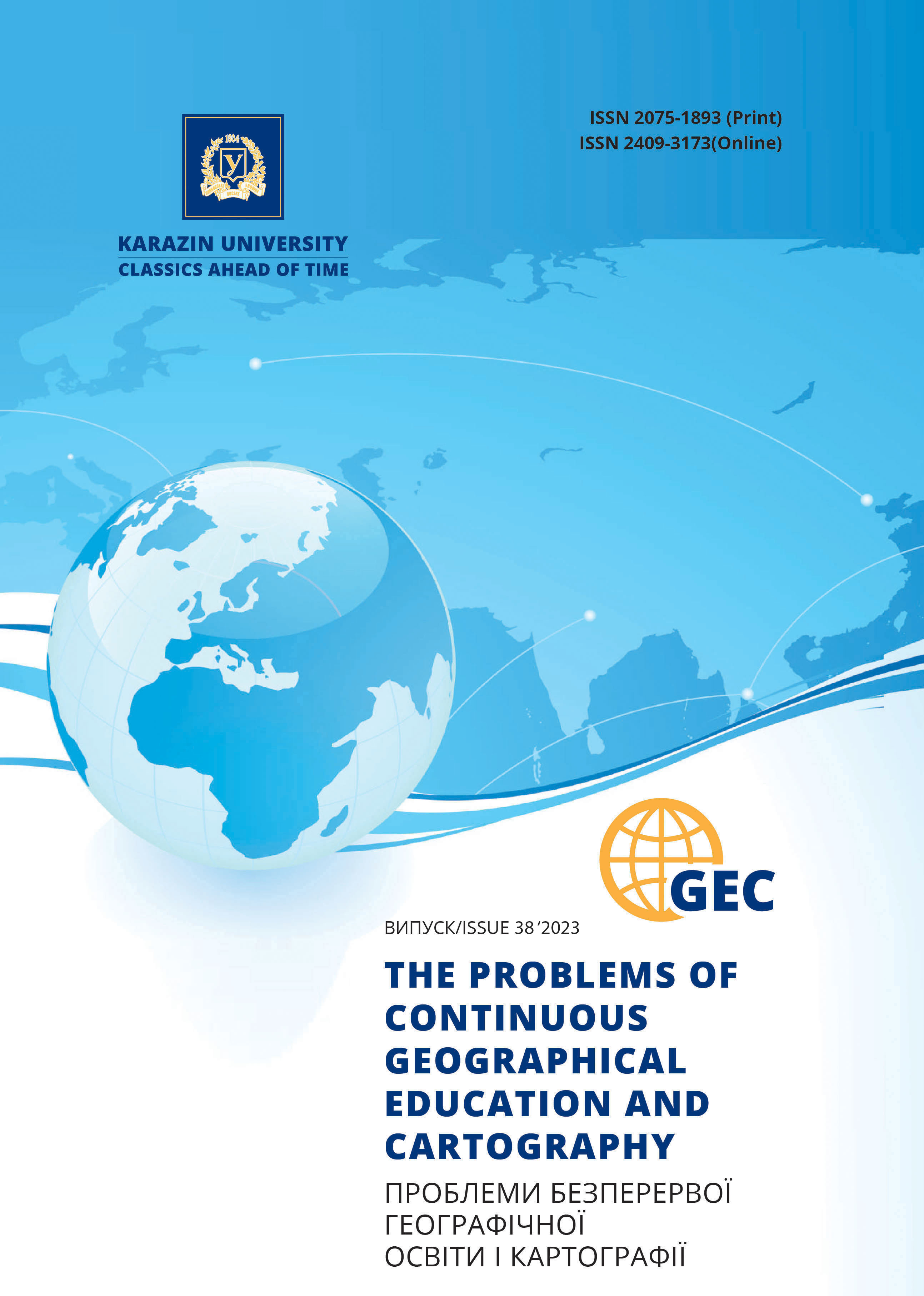Protected areas of Kharkiv region in the conditions of military operations
Abstract
The article analyzes the state of the natural reserve fund of Kharkiv region since the beginning of the full-scale Russian invasion. From the first day, the Russians accompanied their invasion by active hostilities on the territory of the region, which is the main destructive factor affecting the environment, including biological and landscape diversity. The authors highlight main effects of the war on the nature reserve fund, briefly characterizing them. They are as follows: loss of biodiversity, threat to endangered species, fires in ecosystems, chemical pollution from shelling and rockets, soil and water pollution with oil products, uncontrolled hunting and logging, noise pollution, mining of territories.
The paper presents the results of the research based on the analysis of changes in the front line from February 2022 to November 2023. The authors conducted the research for three key dates: April 3, 2022 (when the enemy occupied about 30% of the region) , August 1, 2022 (when the enemy troops were successful on the left bank of the Pecheneg reservoir and a number of new nature protected areas came under occupation) and September 16, 2022 (after the successful counteroffensive of the armed forces of Ukraine). In the process of analyzing the obtained calculations, the authors have drawn maps and found that the leaders in terms of the total protected areas are Izyum, Chuguyiv and Kharkiv districts. However, at the same time, these districts suffered the most from being under occupation and conducted active hostilities during the offensive operations of the enemy and the counteroffensive of the armed forces of Ukraine.
In addition to protected areas that were (or still are) under occupation and directly on the front line, objects that fall into the 30-kilometer buffer zone from the front line as such, which is a zone of potential danger from hitting artillery shells systems.
The article considers the protected areas that are currently under occupation, on the front line or near the state border in more detail. In particular, it analyzes fires on the territory of the Dvorichna National Park according to the open data of EFFIS.This made it possible to identify the largest fires during the entire time of the «great» war, to establish the dates and areas of burning. Based on the analysis, the authors have identified the most severe fires that covered large areas and destroyed the unique landscapes of the protected zone of the national park,as well as potential directions for further research and monitoring.
Downloads
References
Report on the state of the natural environment in the Kharkiv region in 2022. (2022). Kharkiv Regional Military (State) Administration. Department of Environmental Protection and Nature Management [in Ukrainian].
Klimov, O., Vovk, O., Filatova, O. and others. (2005). Nature reserve fund of the Kharkiv region. Kharkiv: VD «Ryder» [in Ukrainian].
Lisova, N. Impact of military actions in Ukraine on the ecological state of the territory. (2017). Constructive Geography and Geoecology, 2, 165-173. Kyiv [in Ukrainian].
Map of the war in Ukraine. (2023). Aailable at: deepstatemap.live [in Ukrainian].
Parkhomenko, V.V., Vasylyuk, O.V. (2022). Protected territories and the Russian-Ukrainian war. Modern phytosozological research in Ukraine. Kyiv, 6 [in Ukrainian].
Diya portal. Open data. Nature reserve fund (2023). Available at: diia.data.gov.ua [in Ukrainian].
Nature Reserve Fund of Ukraine. (2023). Available at: http://pzf.menr.gov.ua [in Ukrainian].
Nature Reserves in Ukraine (2023). Available at: https://wownature.in.ua [in Ukrainian].
Nature moans from war. How Russia’s military invasion affects the environment in Ukraine (2023). Available at: https://zn.ua/ukr/ECOLOGY/priroda-stohne-vid-vijni.html [in Ukrainian].
Tokarsky, V.A., ed. (2011). Natural heritage of the Kharkiv region. Kharkiv: V.N. Karazin KhNU [in Ukrainian].
Nature Reserve Fund of Ukraine. (2023). Available at: http://pzf.menr.gov.ua/ [in Ukrainian].
Sinna, O.I., Zaliubovska, O.V. (2021). Territorial placement of the nature reserve fund of the Kharkiv region in the conditions of the new administrative division. IX International Scientific Conference of Young Scientists «Ecology, Neoecology, Environmental Protection and Balanced Nature Management», November 25-26, 2021. Kharkiv, 188-190. [In Ukrainian].
Emergency Management Service. Current Situation Viewer. (2023). Available at: https://effis.jrc.ec.europa.eu/apps/effis_current_situation [in English].

This work is licensed under a Creative Commons Attribution 4.0 International License.





